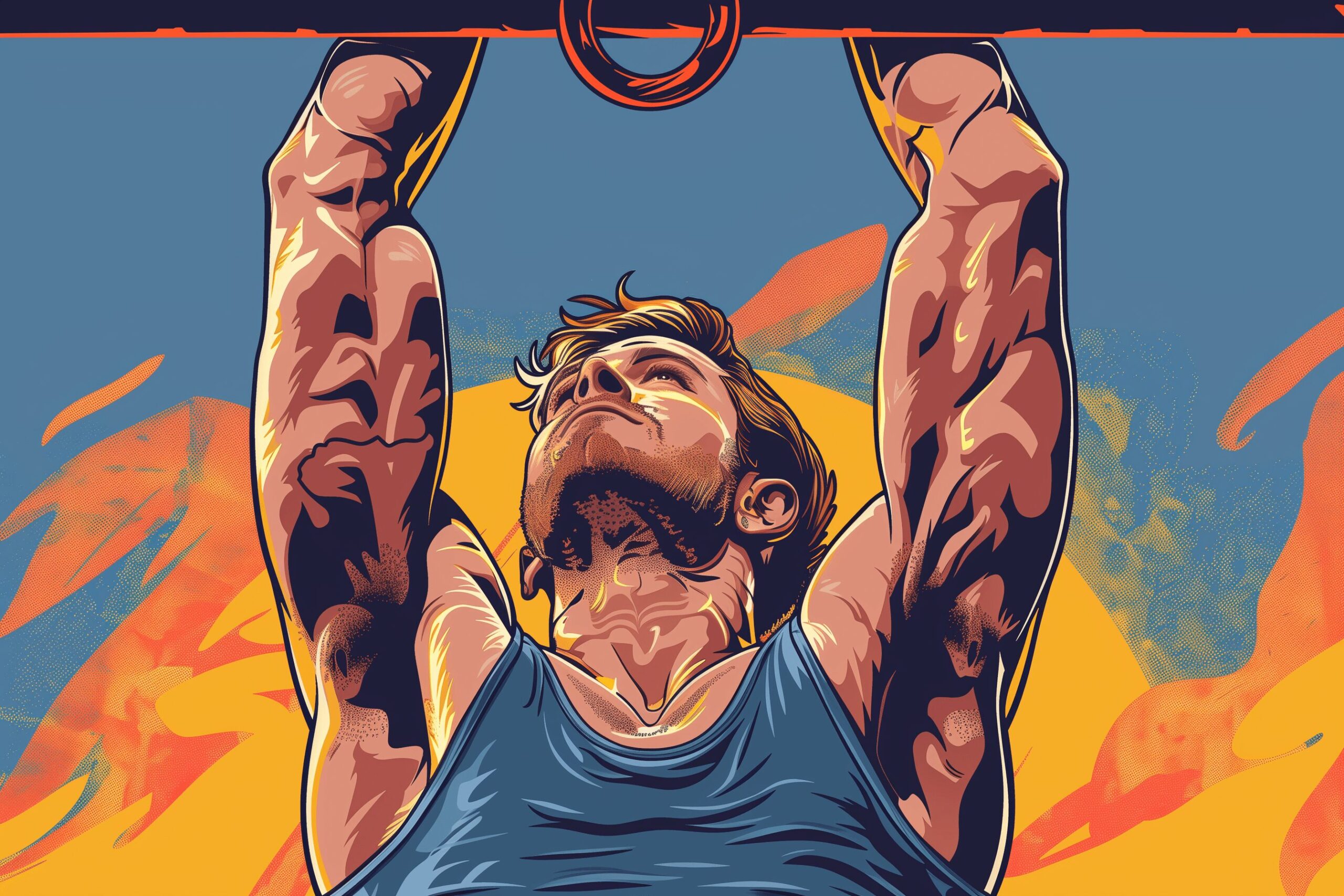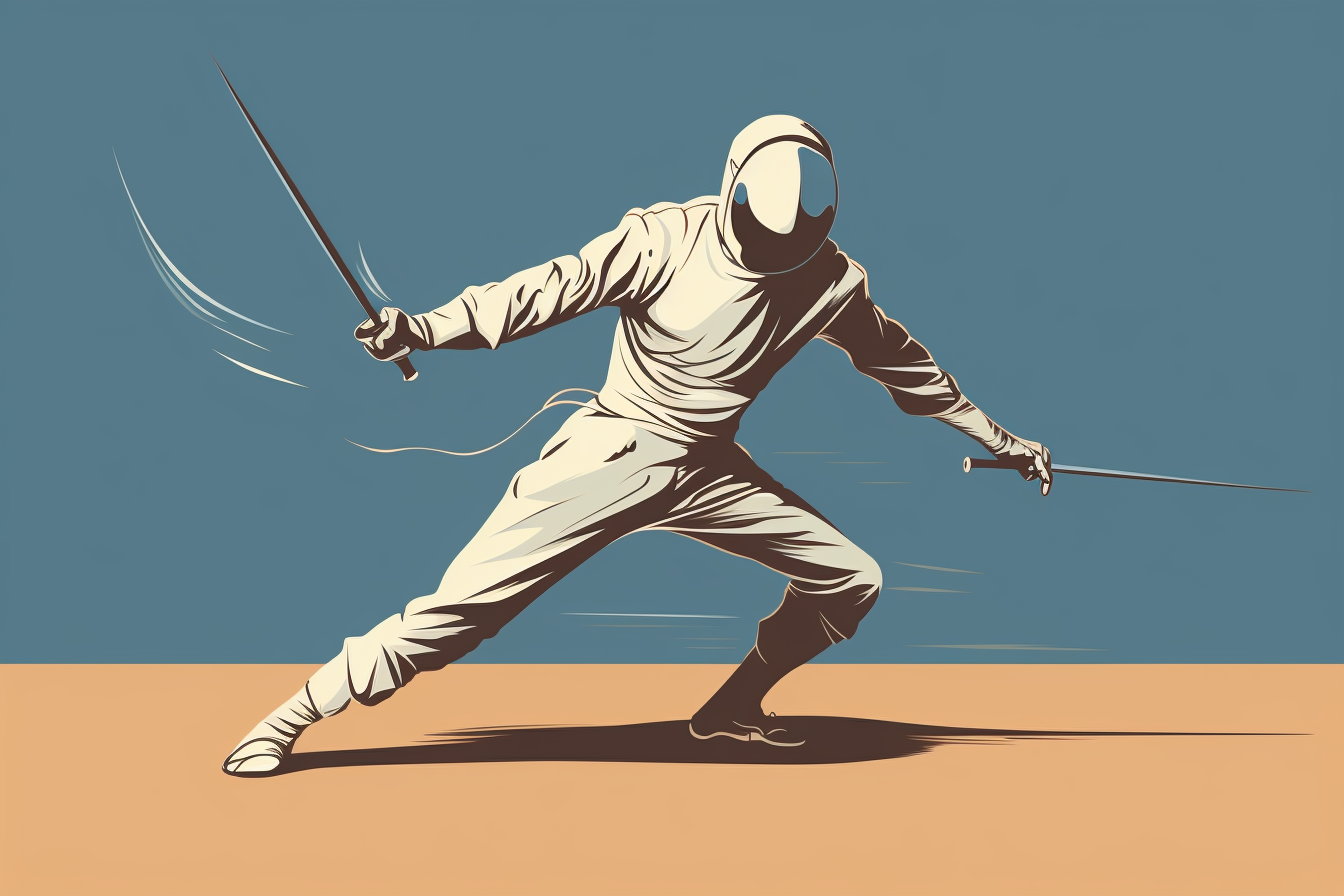
As an Amazon Associate, Modded gets commissions for purchases made through links in this post.
Have you ever watched a movie and stared in awe at the swordplay on screen? Maybe you love the cliffside fight in The Princess Bride or the lightsaber duels in Star Wars. If you’ve ever wished you could try your hand at sword fighting, you’re in luck.
Swordplay sports, such as fencing, are popular around the world in a variety of forms and styles. Sword fighting can be a great workout for your mind and body and make a cool conversation starter. This guide explains how to learn swordplay and why you should give it a try.
Types of Swordplay Sports
There are several different swordplay sports with active communities around the world. There are even many different types of swords to choose from! Regardless of your dream sword fighting style or physical fitness level, there’s a good swordplay sport out there for you.
It’s worth noting that there are also more theatrical options for picking up a sword, like Live Action Roleplay. If you are more interested in getting immersed in the fantasy element of sword fighting, LARP might be a better choice than a full-fledged sport.
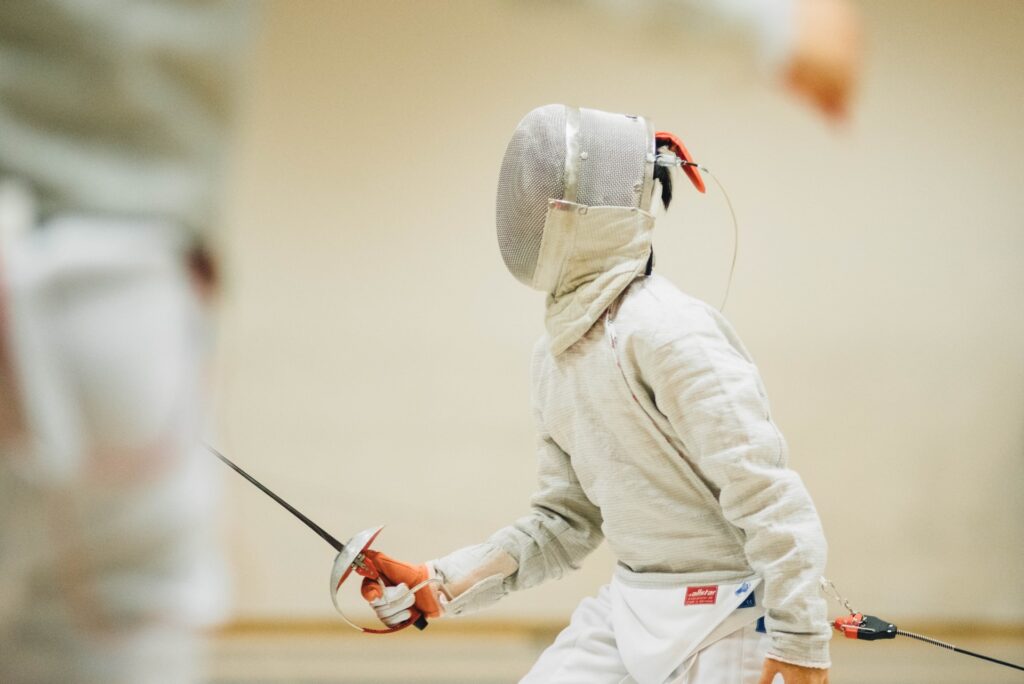
Fencing
The most common swordplay sport today is fencing. Modern fencing is a fast-paced, physical, strategic game. In fact, saber fencing is the second-fastest sport in the Olympics, second only to the speed of the bullet in riflery.
There are three forms of modern fencing: foil, epee and saber. Each uses a different weapon and slightly different rules. Foil is the most popular, epee is the most strategic, and saber is the fastest. Most fencers start with foil then learn one of the other two weapons, although you can start with any of the three.
Many movies with swordplay use fencing as a foundation for the stunt choreography, particularly saber fencing. For instance, if you like Inigo Montoya’s dueling in The Princess Bride, you would probably have fun learning saber.
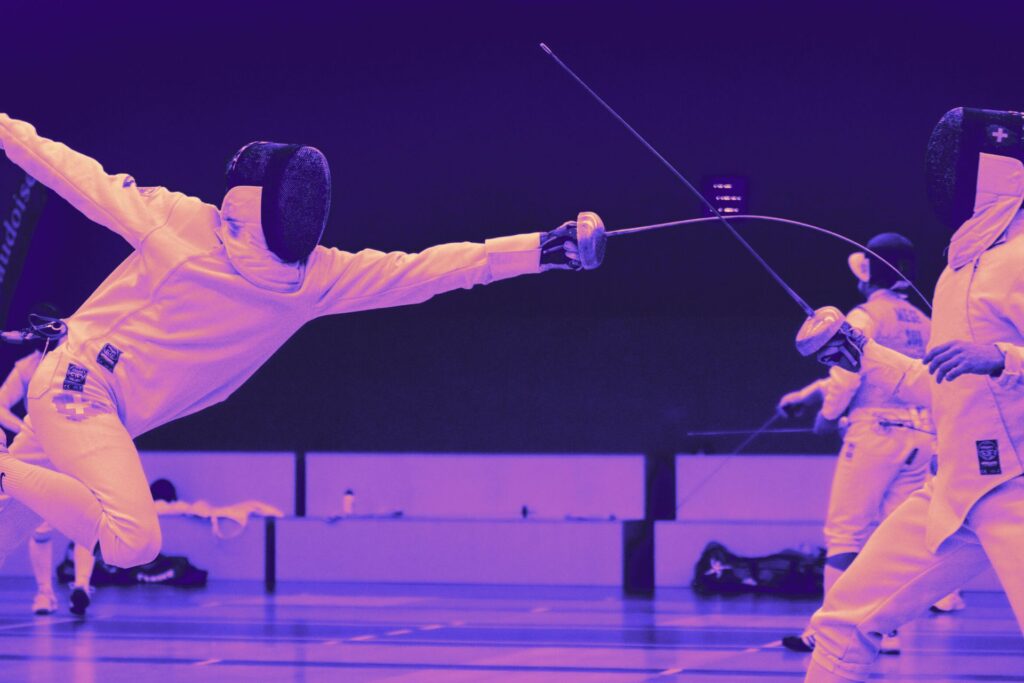
Historical European Fencing
A unique but growing form of fencing is historical European martial arts or HEMA. This niche of swordplay sports focuses on learning martial arts that were used in the Medieval and Renaissance periods. Like modern fencing, there are many weapons to choose from, such as longsword or rapier.
HEMA might sound like a sport for history buffs, but it’s an intense workout. The weight of a longsword makes it great for building core and muscle strength, especially with all the safety gear HEMA requires.
The main downside to HEMA compared to modern fencing is accessibility. HEMA clubs remain few and far between in the U.S. and the gear is more expensive than modern fencing. However, if you want the closest match to sword fighting in fantasy movies and books, look no further than HEMA.
Kendo
Kendo is the most well-known sword fighting style originating from Asia. It’s an ancient martial art originally developed in Japan and now popular all over the world. The swordplay styles used by samurai in pop culture are inspired mainly by kendo.
The word “kendo” literally means “the way of the sword”. It’s a complex and strategic martial art that will also push you physically. Like HEMA, modern kendo fencers have to wear a lot of protective gear to keep from getting hurt. Plus, the swords they use might be bamboo, but they are still heavy.
Kendo is a good swordplay sport to try out if you like other Asian martial arts, such as Karate or Tae Kwon Do. If you like ninja and samurai movies, you might also prefer kendo over other sword fighting sports.
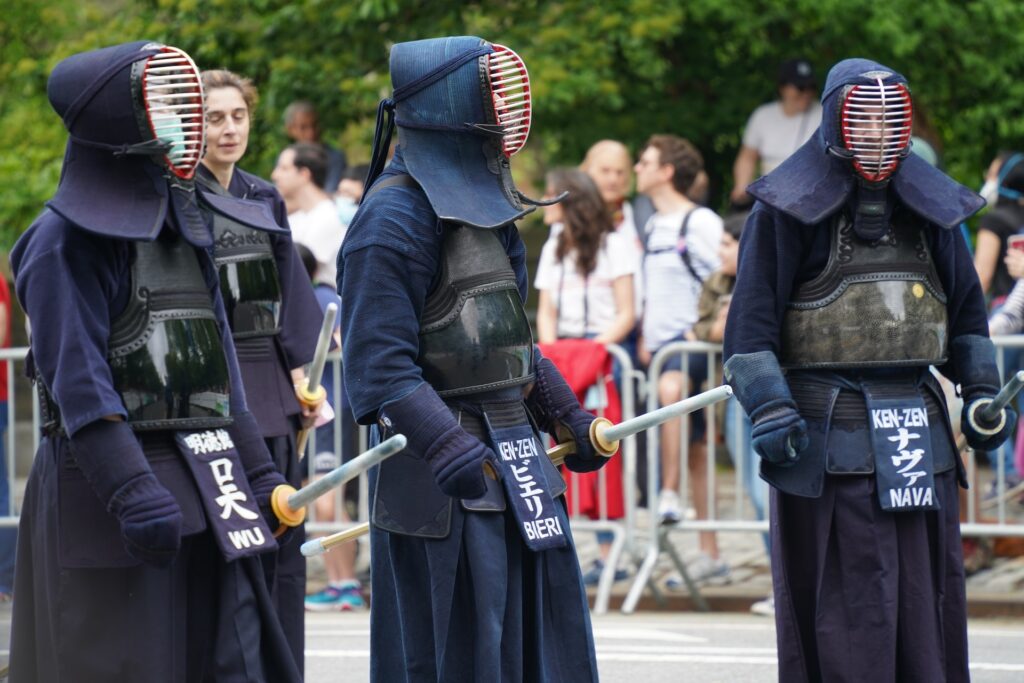
Benefits of Learning Swordplay
Why should you try out a swordplay sport? There are more benefits than you might think, from improving physical health to expanding your social circle and even slowing down aging.
Fitness and Health Benefits
There’s a reason knights are always pictured as being buff and ripped. Sword fighting is seriously physically demanding. Fencing has a reputation as being a “posh” sport played in elite colleges, but it’s far more intense than it might seem, especially saber. If you stick with fencing, HEMA or kendo, there’s a good chance you will start to witness the physical benefits.
Fencing is a great sport for building aerobic fitness and endurance. It trains coordination and dexterity while maintaining good flexibility in your upper and lower body. If you like running and hiking or team sports like soccer or hockey, fencing can be a great complement to build balance and agility.
Swordplay sports are good for cardiovascular health, as well. Sword fighting quite literally gets your blood pumping. It’s very effective for supporting heart health. So, if you’ve been wanting to get more cardio in, consider trading a treadmill for some fencing gear.
Social and Networking Benefits
Like many other sports, fencing and sword fighting can be a great way to expand your social circle. While the demographics of fencing have become much more diverse and inclusive in recent years, it does still tend to attract very smart people due to the strategy element of it. As a result, you’re likely to meet other adults in a wide variety of professional careers, which can be helpful for networking.
Fencing, HEMA and kendo are not just for kids, either. In fact, HEMA and kendo are almost exclusively practiced by adults due to the higher degree of danger compared to modern fencing. All three sports are a great way to make new friends, particularly if you decide to get involved in the local competition circuit.
Mental Benefits
Fencing is incredibly beneficial for your brain and mental health. Swordplay requires a high level of focus and alertness as well as rapid strategic thinking. You might not have these skills when you start learning to sword fight, but practice will help you build them.
In fact, studies have shown that fencing can counteract the brain’s aging process, helping people retain strong mental acuity over a lifetime. Fencing is often called “physical chess” for a good reason. It teaches you to be observant, decisive and clever.
All of the mental strategy skills you learn in fencing are valuable in everyday life. Confidence and quick decision making are advantageous skills in any job. Good awareness and coordination can even save your life in situations like driving or walking in an unsafe area. Plus, a strategy mindset can help you make smarter everyday decisions, such as how to invest your money for long-term success or how to negotiate for a good deal.

How to Get Started
Getting started in a swordplay sport can often be the hardest part. Unfortunately, these sports tend to require expensive equipment and you will usually have to pay a monthly club fee. A set of starter gear for modern foil fencing can cost $300 or more on the low end. The good news is, you won’t need to replace your gear often. Most fencing gear lasts for years.
So, you may have a high initial investment but you won’t usually have to pay much to practice after that. Luckily, most fencing clubs have beginner classes that include access to shared club-owned equipment you can borrow.
Depending on the state you are in, the biggest challenge might be finding a fencing club. The United States Fencing Association or USFA has the largest directory of modern fencing clubs around the country. Their directory only includes member and affiliate clubs, though, many of which may be high school and college teams. There could be more casual groups in your area that are not part of the USFA, but the USFA directory can still be a good place to start.
America’s fencing clubs are highly concentrated in ten states, including New York, Pennsylvania and Texas among others. Some states have a single fencing club in them while others have dozens. Clubs also tend to be more common in urban areas.
HEMA and kendo clubs are even more difficult to find. You may be able to find local groups through Reddit and Facebook communities if there isn’t a formal HEMA or kendo club in your area. Modern fencing clubs sometimes have a partner HEMA club, so check with any fencing clubs or groups in your area to see if they know anyone practicing HEMA nearby.
Learning Swordplay for Fun and Fitness
Sword fighting looks awesome on screen, but it isn’t trapped in the world of movies. Anyone can learn swordplay in real life. Fencing, HEMA and kendo all offer great opportunities to learn a cool sport, get in great shape, train strategic thinking and make new friends. These sports are fast-paced and physically demanding, so if you stick with them you can be a real-life knight in no time!
Stay up to date with the latest by subscribing to Modded Minute.
Author
Jack Shaw is a senior writer at Modded. Jack is an avid enthusiast for keeping up with personal health and enjoying nature. He has over five years of experience writing in the men's lifestyle niche, and has written extensively on topics of fitness, exploring the outdoors and men's interests. His writings have been featured in SportsEd TV, Love Inc., and Offroad Xtreme among many more publications.



